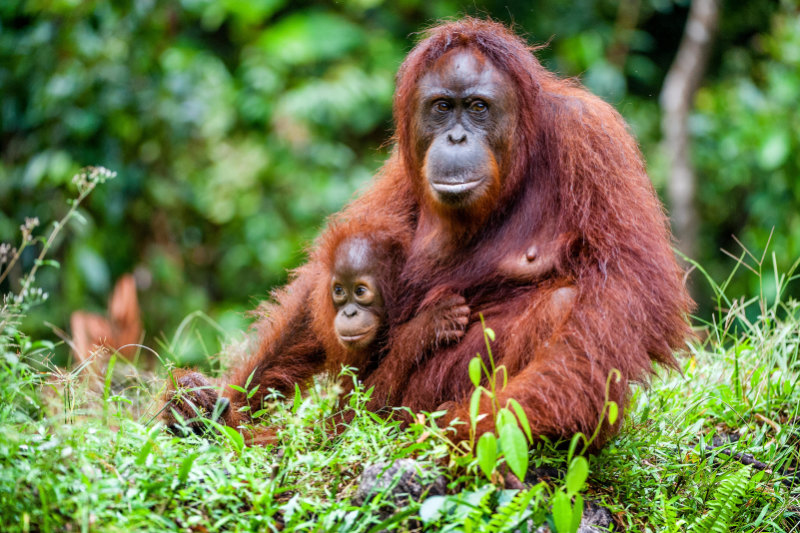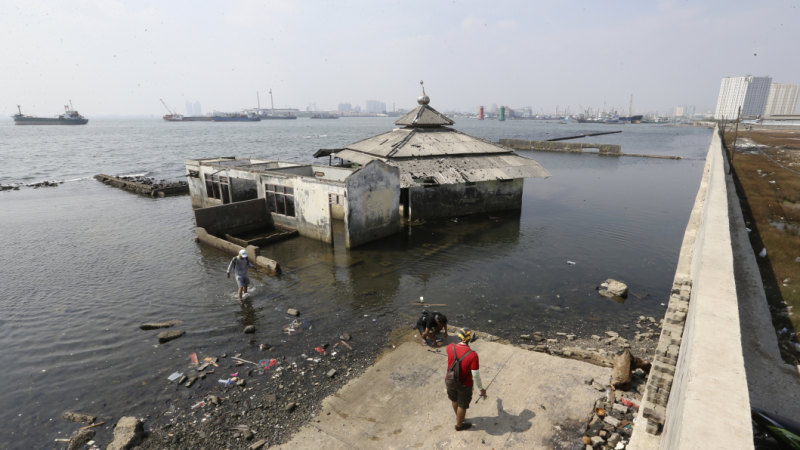_02.jpg) |
| A pair of Asiatic cheetahs |
In Iran, nine conservationists launched one of the most ambitious projects in the country in recent years, putting up camera traps in seven provinces to monitor the population of the critically endangered Asiatic cheetah. Despite working with the government, obtaining permit rights, and receiving funding and equipment from abroad, the team, whose members are all Iranian, drew suspicion from the Revolutionary Guard and were arrested last year for supposed espionage. Now, it has been reported that four of the nine conservationists have been charged with "spreading corruption on earth" and could face the death penalty, and four others could be sentenced to up to ten years in jail. The team, who is from the Persian Wildlife Heritage Foundation, are anticipating a verdict in a trial that rights groups say has been damaged by accusations and abuses of torture. The ninth conservationist, Kavous Seyed-Emami, was the chairman of the foundation. He was jailed last year and died while in custody. A prosecutor general from Tehran stated that Mr. Seyed-Emami, who held Canadian citizenship, died by suicide; a claim which his family and colleagues refuse to believe. The situation of the conservationists, described by family and friends as ardent champions of the environment, has underlined what analysts say an increasing criminalization of scholarly and scientific research in Iran, incited by the security forces' deep suspicion of contacts with foreign institutions.
 |
| Islamic Revolutionary Guard logo |
The Revolutionary Guard has targeted researchers, academics, business executives, and dual nationals for arrest to a greater extent, and the coercive campaign is taking a particular toll on efforts to discuss a growing environmental crisis. Apart from concerns about disappearing species, Iran is encountering decreasing water resources because of fast urbanization and too much dam-building. The Persian Wildlife Heritage Foundation started using camera traps to track the shy cheetahs amidst worries over its deteriorating habitat, which is threatened by Iran's increasing mining sector and expanding road network. Scientists say that the cheetahs now number less than 50. Founded in 2008, the foundation had long worked with the country's Department of Environment, which functions under president Hassan Rouhani and had warm relations with authorities. After the arrest of the conservationists, more than 350 scientists, including Dr. Jane Goodall, signed a letter to Iran's supreme leader, Ayatollah Ali Khameini, in support of the conservationists. Earlier this year, two government agencies supervised by President Rouhani, including the country's Supreme National Security Council, cleared the researchers of crime in inquiries stimulated by Mr. Seyed-Emami's death. However, the verdict did not win their release. The Human Rights Watch disclosed that at least two members of the group, U.S-educated biologist Niloufar Bayani and project coordinator Sepideh Kashani, planned to start a hunger strike this to protest their detainment. The fate of the conservationists has become embroiled in the tensions between between President Rouhani's moderate administration, which has sought communication with the West, and hard-liners in the Revolutionary Guard. Scientists have warned that the imprisonment of the conservationists has stopped crucial wildlife protection efforts in Iran.
 |
| If the Asiatic cheetah becomes extinct, it will join the Caspian tiger which became extinct in the decades past. |
It really aggravates me and makes me feel angry to see that these conservationists have become victims of injustice and paranoia that is sweeping across Iran, due to the presence and influence of the Islamic Revolutionary Guard. How can these people be persecuted like animals when they have been working with the country's government and securing permit rights to conduct their operations in the name of conservation, especially when the animals they are studying are on the precipice of extinction? Iran wants to save the Asiatic cheetah, which is teetering on the brink of extinction, but the country's own people, both local and coming from abroad, are being unfairly targeted on flimsy charges relating to espionage when all they are doing is conducting research in order to save the cheetah. And despite the lack of solid evidence against them regarding such allegations, they are still being held hostage. This is absolutely intolerable! I cannot stand this form of senseless injustice being implicated on these innocent people and neither can the world. It is not just conservationists who have been targeted, other people have also fallen victim to this heinous witch-hunt. In the past two months, authorities have arrested two scholars of dual citizenship. They are French-Iranian researcher Fariba Adelkhah and British-Iranian anthropologist Kameel Ahmady. In addition, a U.S scholar from Princeton University named Xiyue Wang has been jailed since 2016 when he traveled to the country to research his thesis on the Qajar dynasty. I strongly urge the government of Iran to take intense action against the Revolutionary Guard, in order to ensure justice for the conservationists and other people held captive in the country on baseless charges. The Revolutionary Guard may be essential to Iran regarding duties such as defending its borders, but its actions has labeled it a terrorist organization by Saudi Arabia, Bahrain, and the United States. Therefore, I believe that it is absolutely essential to bring substantial changes to the Revolutionary Guard by identifying and prosecuting members responsible for arresting innocent scholars, business executives, dual nationals and others, and torturing them on the baseless charges related to espionage. I think that even though Iran wants to save the Asiatic cheetah from extinction, it has inadvertently halted the efforts intended on saving it by having conservationists arrested on such flimsy criminal charges. This cannot and should not happen any further! Any further delay and not only would the conservationists studying the cheetahs succumb to the injustice instilled upon them, but the cat itself would vanish into history just like the Caspian tiger and the Asiatic lion which became extinct in Iran in the decades past.
View article and video here






.jpg)




